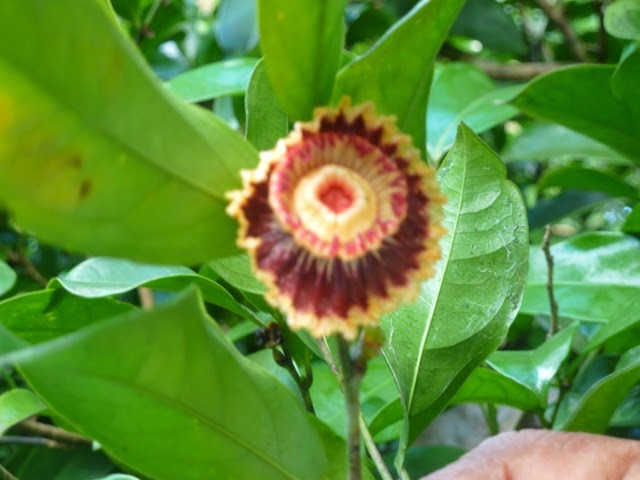In the morning, the itinerary was a visit to a village to learn how toe locals live in the past (in mud houses, etc). However, I think the highlight was not so much about the visit but the various means of transport we took to reach and return from the village.
The first was the bullock cart ride. It was fun, when it went on the uneven muddy path. Come to think about it, it's hard on the animals :(
As the village is in the opposite bank of the lake, we had to take a boat ride, that I almost wanted to give up if not that the guide locals being able to hold my hands tight to walk me through that single wooden plank "bridge" to boat the mosquito-infested boat. That was bad! And I ended up with no less that 15 kisses from the hungry mosquitoes :(
On the other hand, the lake was quiet and charming, with clusters of lotus leaves and water hyacinths on the calm surface, occasionally, we chanced upon some beautiful lotus flowers and dragonflies!
Birds flew across the surface occasionally - Pelicans, Eagles, and yes, the small kingfishers!
The return trip, instead of the bullock cart, we took the tuk-tuk :)
Ok, amongst all, it's the least exciting but probably the safest amongst the three, though 3 people were packed at the back seat, behind the driver.
The day ended with the most unforgettable jeep ride in the safari, compared to the ones we had in South Africa. The search was about the elephants. It started with some shine that very quickly turn into dark clouds and rain as we drove deeper into the safari where the jeep ran along muddy uneven paths when most of the time, we neede to hold tight to the railings, fearing that we might be thrown to the mid-air inside the jeep!
We saw big herds of buffaloes that stood still for the pictures despite the rain. I guess they must be so used to it.
At last, we saw 5 "brown" elephants and we were told that the brown colour stuff were the mud on the body. Ok, they were not brown after all!


























